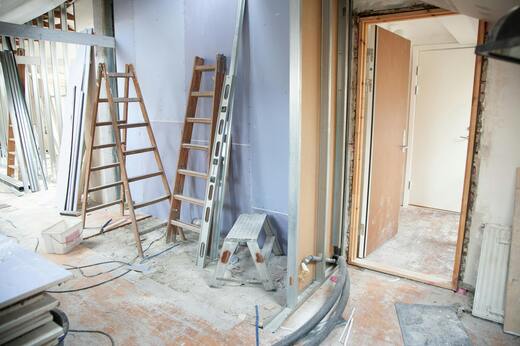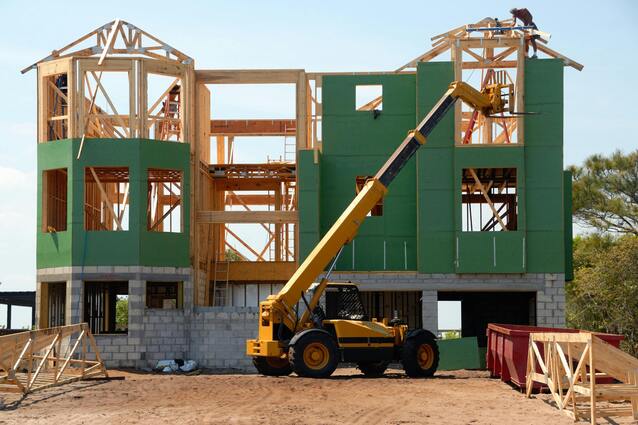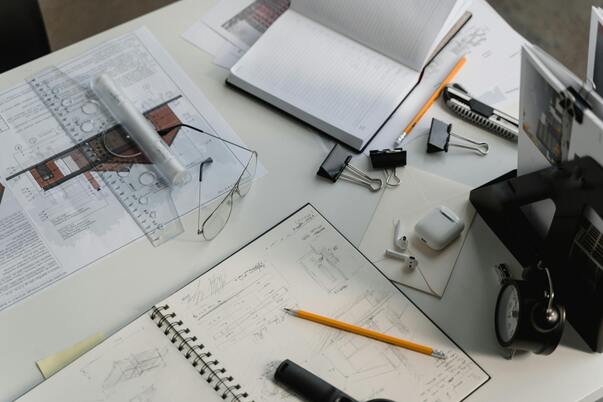Secrets to a Smooth Home Build in Maryland and DC
Building a home is an exciting adventure, but it’s not without its pitfalls. In Maryland and Washington DC, the stakes can be particularly high, given the unique local regulations and the dynamic real estate market. Whether you’re a first-time builder or an experienced homeowner looking to expand, understanding the common mistakes can save you time, money, and stress.
The Importance of Avoiding Common Pitfalls
When building a home, the allure of having a custom space tailored to your needs is undeniable. However, this dream can quickly become a nightmare if you fall into common traps. In Maryland and Washington DC, where regulations and market conditions can vary significantly, being well-informed is crucial. This blog post aims to arm you with the knowledge you need to sidestep these pitfalls and ensure a smoother home-building experience.
 Mistake #1: Not Researching Local Building Regulations and Zoning Laws
Mistake #1: Not Researching Local Building Regulations and Zoning Laws
One of the most critical yet often overlooked aspects of home building is understanding local building regulations and zoning laws. In Maryland and Washington DC, these laws can be complex and vary significantly from one locality to another.
Understanding Zoning Laws
Zoning laws dictate what can be built on a particular piece of land. They govern everything from the type of structure to its height and density. Failing to understand these laws can result in costly legal issues and delays. For example, some areas may have restrictions on building multi-story homes, while others might have specific requirements for setbacks and lot coverage.
Navigating Building Regulations
Building regulations, on the other hand, ensure that your home is safe and habitable. These include codes related to plumbing, electrical work, fire safety, and structural integrity. Ignoring these regulations can lead to significant fines and might even require you to demolish and rebuild non-compliant structures.
Practical Tips
To avoid these issues, start by consulting with local planning departments and reviewing zoning maps. Hiring a local architect familiar with these regulations can also be immensely helpful. They can guide you through the process, ensuring your design complies with all local laws.
Mistake #2: Underestimating the Importance of Choosing the Right Contractor
Your contractor plays a pivotal role in bringing your dream home to life. Yet, many homeowners underestimate the importance of choosing the right one, leading to subpar workmanship, delays, and budget overruns.
Vetting Your Contractor
The first step in choosing the right contractor is thorough vetting. Look for contractors with a strong portfolio of completed projects similar to what you’re planning. Check their credentials, including licenses and insurance, and don’t hesitate to ask for references. Speak directly with previous clients to gauge their satisfaction with the contractor’s work.
The Perils of Low Bids
While it might be tempting to go with the lowest bid, this can be a costly mistake. Low bids often come with hidden costs, and the contractor may cut corners to save money. Instead, focus on value for money. A slightly higher bid from a reputable contractor can save you a lot of headaches in the long run.
Building a Relationship
Another crucial aspect is building a good relationship with your contractor. Effective communication is key. Make sure you’re comfortable discussing your ideas and concerns with them. A contractor who listens and provides valuable feedback will contribute significantly to the success of your project.
 Mistake #3: Overlooking Energy Efficiency in Design and Materials Selection
Mistake #3: Overlooking Energy Efficiency in Design and Materials Selection
In today’s world, energy efficiency is not just a trend but a necessity. Overlooking this aspect during the design and material selection phase can lead to higher utility bills and a larger carbon footprint.
Designing for Efficiency
Energy-efficient design starts with the layout of your home. Positioning windows to maximize natural light and ventilation can significantly reduce energy consumption. Additionally, consider installing energy-efficient appliances and systems, such as HVAC and water heaters.
Materials Matter
The materials you choose also play a vital role. Opt for eco-friendly and sustainable materials like bamboo, recycled steel, and reclaimed wood. Insulation is another critical factor. High-quality insulation can drastically reduce heating and cooling costs, making your home more comfortable year-round.
Long-term Benefits
Investing in energy efficiency might have higher upfront costs, but the long-term savings are well worth it. Not only will you save on utility bills, but energy-efficient homes also have higher resale values, making it a smart investment for the future.
Mistake #4: Failing to Plan for Future Needs and Changes in Family Dynamics
Building a home is a long-term investment, so it’s essential to plan for the future. Many homeowners make the mistake of designing a home that suits their current needs without considering how those needs might change.
Predicting Future Needs
Consider how your family might grow or change over the years. For instance, you might need an extra bedroom for a new baby or a home office if you start working remotely. Flexibility is key. Design spaces that can be easily adapted for different uses.
Incorporating Universal Design
Universal design principles can make your home more adaptable and accessible. Features like wider doorways, step-free entrances, and multi-level counters can accommodate everyone, regardless of age or mobility. This is especially important if you plan to stay in your home as you age.
Storage Solutions
Ample storage is another critical aspect often overlooked. Built-in shelves, closets, and attic space can keep your home organized and clutter-free, accommodating your needs as they evolve.
 Actionable Tips to Avoid These Mistakes
Actionable Tips to Avoid These Mistakes
Now that we’ve identified the common mistakes, here are some actionable tips to help you avoid them:
Do Your Homework
Research is your best friend. Before you start any project, make sure you understand local building regulations and zoning laws. This will save you from potential legal issues and delays.
Choose Wisely
Take your time when selecting a contractor. Vet their credentials, check references, and build a good working relationship. Remember, the lowest bid isn’t always the best.
Think Green
Incorporate energy-efficient designs and materials into your plans. This will save you money in the long run and make your home more eco-friendly.
Plan Ahead
Consider your future needs and incorporate flexibility into your design. Think about how your family might grow or change and design adaptable spaces.
Building a home in Maryland or Washington DC can be a rewarding experience if done right. By avoiding common pitfalls like not researching local regulations, underestimating the importance of a good contractor, overlooking energy efficiency, and failing to plan for future needs, you can ensure a smoother, more successful project.
Remember, informed decision-making is key. Take the time to research, plan, and consult professionals. Your dream home is within reach, and with the right approach, it can become a reality. If you’re ready to start planning, consider booking a consultation with a local expert to guide you through the process. Happy building!


 Mistake #3: Overlooking Energy Efficiency in Design and Materials Selection
Mistake #3: Overlooking Energy Efficiency in Design and Materials Selection Actionable Tips to Avoid These Mistakes
Actionable Tips to Avoid These Mistakes

